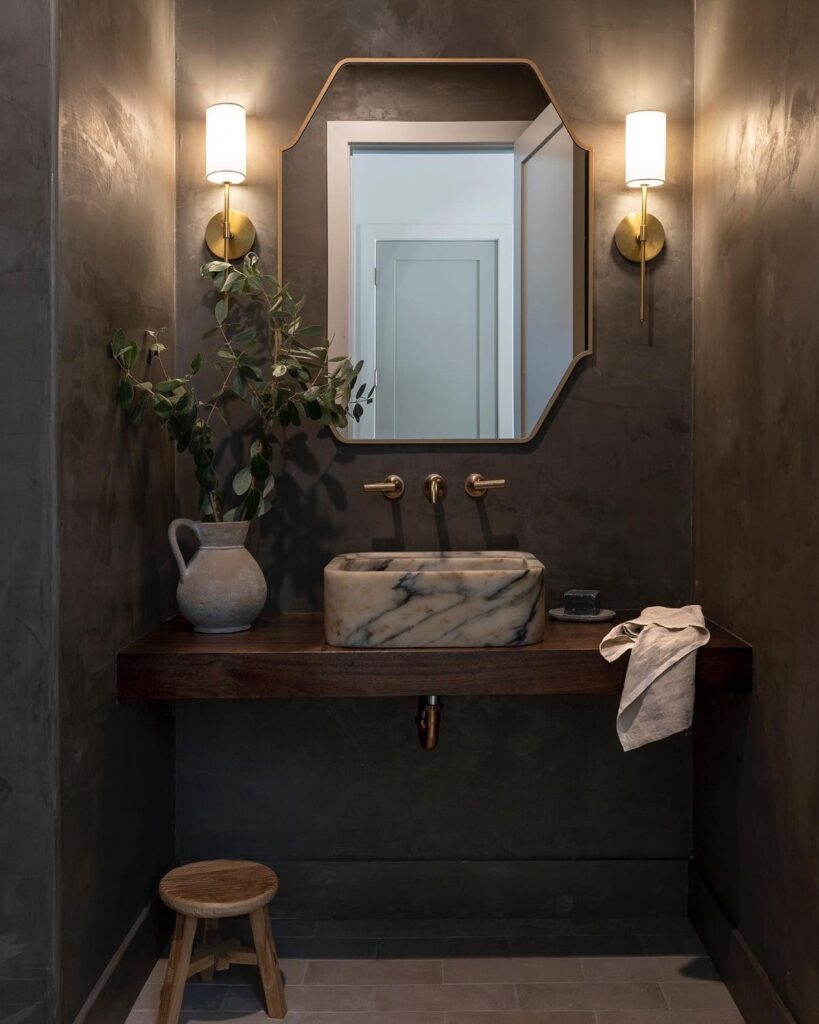With the prominence of social media, society seems to have lost its sense of individuality. On Instagram, TikTok, YouTube, or Pinterest, there’s a slew of trends. People, whether professional or not, seem to have something to say about every aspect of home design. Trends arise and people see their favorite influencer following those trends. Then people create rules to achieve said trends and we wonder why everybody’s homes resembles each other. We have lost the ability to think and feel for ourselves.
If you want your place to not look copy and pasted from the internet, then you may have to break a few rules. Play with lighting and art placement. Use dark colors in small spaces, mix those patterns people told you not to, and put those rugs where you damn well please.

The Importance of Design Rules
Design rules aren’t all bad. They can be helpful for guidance especially if you’re new to designing an interior. Designing a space or even an entire home can be daunting. Even experienced designers break these rules. To be innovative, you have to step outside the box. I truly believe creativity depends on that. Let’s get into some rules you should break.
Design Rule #1 – Stick to Warm Lighting
The Rule: I touched on this a bit in my last post, but most designers would say that warm lighting in your home is a must. While I agree with warmer lighting being cozier, I don’t think its the only way.
Breaking It: I personally have color changing lights in my home. I like them because I can set the color according to the task. If I’m winding down for bed, then I’m definitely going for a warmer light- yellow, orange, or even red. If I’m taking care of a task like cleaning, cooking or crafting, then I need a brighter light. Those are usually daylights or white lights. And if its movie night or some kind of nighttime social gathering, I’m really into purple, pink or green lighting. My point is that you can play with lighting and it should be more about setting a mood. And not everything you get up to at home, calls for warm lighting.

Design Rule #2 – Hang Art at Eye Level
The Rule: Hang art at eye level, they say. It helps create balance and harmony, they say. Well here’s the issue with this rule, everyone has a different eye level since were all different heights. So what’s balanced to one person may be super off balanced to someone else.
Breaking It: Breaking this rule allows you to play with the placement of your artwork. I personally love leaning art against each other on the floor or on a counter top or dresser. It may sound chaotic, but as long as there aren’t children or animals around, it can be a unique approach. Of course it’s been done before but certainly not as often as the traditional wall placements. Another placement option is hang the artwork on the wall but instead of eye level, you hang it low to the floor right above the baseboard. It’s wacky and rule breaking.

Design Rule #3 – Avoid Dark Colors in Small Spaces
The Rule: This rule is one that used to make so much sense to me. Why visually shrink an already small space, when you can make it feel more airy and spread out? But the older I get, the less sense this rule makes. And the reason being is simple – paint choice and other decor colors are not changing the square footage of a space. I think a better rule for making a small space appear larger, is to not fill it with too much stuff or oversized furniture. That quite literally will shrink the available square footage.
Breaking It: Dark colors can create a cozy, intimate, and sophisticated atmosphere even in small rooms. Choosing deep moody tones will help you lean into the tightness. Lighter colors wont actually make it any bigger so you may as well embrace the size.

Design Rule #4 – No Rugs on Carpet Floors
The Rule: Many designers feel that rugs do not belong on top of carpet. Some may say it is redundant or perhaps too visually busy. As someone who never grew up in a home with hardwood or laminate or tile or anything other carpet in the living, dining, and bedrooms – I think that rugs are more than just a foot warmer.
Breaking It: Rugs can help define and ground a space. I would say that is especially important in a home with an open floor plan. Also, many rental spaces have carpet that cannot be pulled up. If you hate the carpet, a rug is a great option to cover it up and personalize the space for however long you occupy it.

Design Rule #5 – Don’t Mix Patterns
The Rule: Many people will tell you to use patterns sparingly to avoid overwhelming a space. With the rise of maximalism, that seems to be changing a bit. However, there are many people who still believe patterns should never be combined at all.
Breaking It: Layering patterns can add depth and personality to a room. It creates character and interest. If anything, I think the rule should be to not combine large scaled patterns with other large scale patterns. It’s busy and tacky, in my humble opinion. But large scale + small scale or small scale + small scale is perfect. I’ll add that you don’t need to necessarily stick with the same colors when mixing patterns. For instance, don’t mix one red pattern with a different pattern that is also red. I’m sure that approach would help with cohesiveness. But I think more than anything, patterns should be in the same color saturation family. Meaning, if you want to combine pattern a + b, they should both be muted colors. Or when combining patterns 1 + 2, they should both be pastel colors. I think you get it.

Practical Tips for Breaking Design Rules
The goal with designing your home should be to express yourself and your interests, but not to follow trends. Don’t let rich influencers or overrated interior designers dictate your design choices. Break those rules, experiment, and take risks. This is your place after all, so act like it. Find the balance between pattern choices, paint color, lighting and rug choice. Break rules strategically in order to avoid a chaotic space. Trust your instincts. You got this! Check out my post about choosing color schemes here. And my post on cultivating a charming home here.









